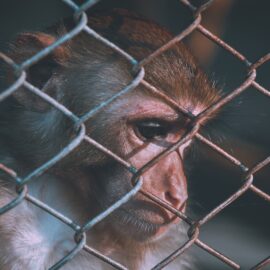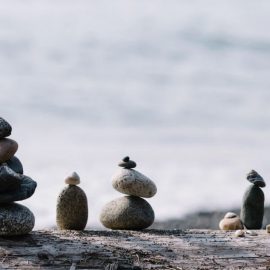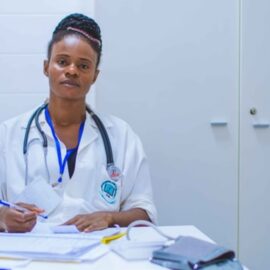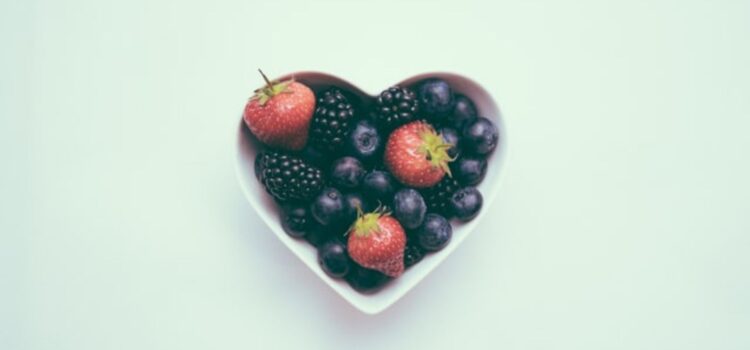
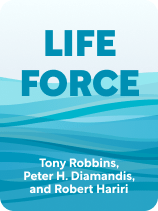
This article is an excerpt from the Shortform book guide to "Life Force" by Tony Robbins, Peter H. Diamandis, and Robert Hariri. Shortform has the world's best summaries and analyses of books you should be reading.
Like this article? Sign up for a free trial here.
Do you want to start eating healthier but aren’t sure where to start? What are some healthy eating tips that can help you set your diet on track?
When it comes to healthy eating, there’s so much misinformation that it can be hard to find advice that’s credible and science-backed. However, it’s critical to have correct knowledge of what’s healthy to eat and what isn’t.
With this in mind, here’s diet and nutrition advice you can trust.
The Importance of a Healthy Diet
The best way to prevent disease is by living a healthy lifestyle, but there is a great deal of conflicting diet and nutrition advice available. In their book Life Force, Tony Robbins, Peter H. Diamandis, and Robert Hariri offer some tips for how to be healthier, beginning with establishing and maintaining a healthy diet.
(Shortform note: While some of the conflicting information surrounding healthy dietary choices is the result of the difficulty of performing accurate research on the subject, some of it is just plain misinformation. Much of this comes from social media sites like Tik Tok, where influencers often oversell diets, recommend heavily restrictive diets that can lead to malnutrition, such as the Mono diet, and misrepresent the details of certain diets like the Mediterranean diet. The best way to find a healthy diet that works for you is to consult with your healthcare professional and avoid being overly influenced by social media or other questionable sources.)
Dietary Needs and Food Availability
Robbins, Diamandis, and Hariri also point out that many of our dietary needs depend on our ancestry and that we should personalize our diets according to these needs. As humans evolved, groups of people lived in areas where only certain foods were available, so their microbiomes—the combination of bacteria, viruses, and microbes that inhabit our digestive tracts and influence our metabolism—evolved to be better at metabolizing certain foods than they were at others. The authors recommend having your gut’s microbiome tested to see what foods are the best for your personal health.
(Shortform note: Lactase persistence, or the ability to metabolize dairy, is one of the clearest examples of the role of ancestry in dietary adaptations. People who lived in areas where the domestication of cattle was common developed the ability to process dairy and passed it down genetically, while those who lived in other areas—and their descendants—remained lactose intolerant. Similarly, because humans only began eating gluten about 10,000 years ago, their microbiomes have had relatively little time to adapt to this type of food, and many people today have gluten sensitivity or intolerance. Like the authors, some experts suggest that the healthiest diet is one based on the food your ancestors ate.)
The authors acknowledge that much of our diet consists of the foods that are readily available to us—as opposed to foods that are best for us based on our ancestry or foods considered universally healthy. They explain that more and more of the foods we’re being sold are ultra-processed foods that are often marketed as healthy (foods like granola bars and fruit juices). However, these foods are associated with an increased risk of high blood pressure, heart disease, cancer, and diabetes.
Additionally, the average American diet features excesses of sugar, meat, fat, and sodium, and consists of too many calories in general. The authors recommend cutting out refined carbohydrates, sugary drinks and foods, red meat, processed meat, and dairy and replacing them with fruits, vegetables, legumes, fish, and whole grains.
(Shortform note: Some people have less access to healthy foods simply because of where they live. Many people, particularly those in high-poverty or sparsely populated areas, are living in food deserts, which means they have very few sources of healthy foods like fruits and vegetables. Grocery prices have also spiked in recent years, forcing many consumers to opt for cheaper, less healthy foods. In fact, eating at a fast food restaurant—which serves the types of high-calorie meals the authors tell you to avoid—can actually be cheaper than buying healthy foods from a grocery store.)
Fasting
According to the authors, fasting is a helpful tool in both weight loss and fighting disease. Fasting gives your body a break from digestion and shifts your metabolic state from burning sugar for energy to burning fat. They list a number of fasting methods, including establishing a specific time period each day during which you eat and then fasting the rest of the time—anywhere from 12 to 16 hours per day. This could be accomplished by skipping breakfast and only eating between noon and 8 pm, for example. Another method involves heavily restricting your calories two days a week and eating normally the other five.
(Shortform note: While fasting can be beneficial for some, research suggests that it may increase the risk of developing eating disorders like bulimia and anorexia nervosa and that young people are at an increased risk for these conditions. If you have, suspect you have, or are at risk for an eating disorder, consider implementing less restrictive lifestyle choices that don’t involve fasting and that help you cultivate a healthy relationship with food.)

———End of Preview———
Like what you just read? Read the rest of the world's best book summary and analysis of Tony Robbins, Peter H. Diamandis, and Robert Hariri's "Life Force" at Shortform.
Here's what you'll find in our full Life Force summary:
- How new technology may dramatically expand the human lifespan
- Lifestyle changes you can make now to increase your lifespan
- Whether or not it's possible for humans to become immortal

